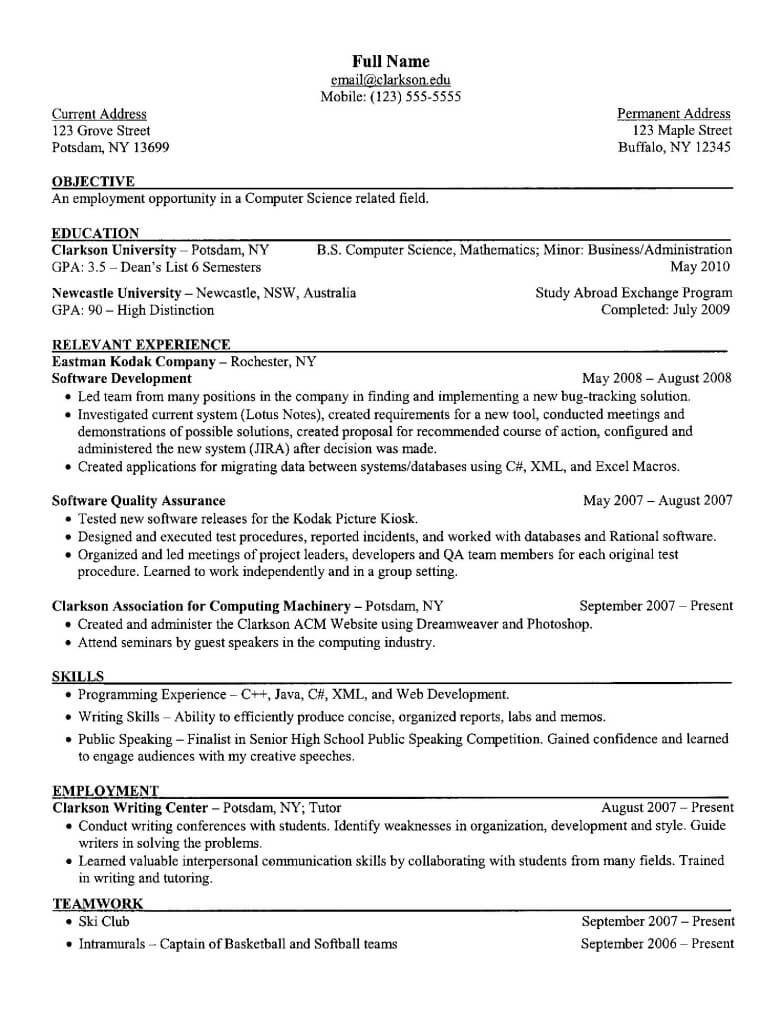3.3 Build Your Translator Profile
Your translator profile is how potential clients find the ideal translator out of all potential candidates; it is your face to the professional world and you want it to stand out. Your profile may be available in a number of formats:
- a personal website
- an entry in an association like ATA
- a profile in a workplace profile like ProZ or TranslatorsCafé
In whatever manner you have it available, your translator profile introduces you as a translator, so it needs to be professional, thorough and include pertinent information such
- your native language and education
- source language and dialects
- time spent abroad
- translation experience
- any relevant work experience.
Curriculum Vitae
A resume (a.k.a. curriculum vitae) is usually the preferred application method in the translation field. It allows for a more detailed account of skills, education, and experiences relevant to your specializations. Keep in mind, your translation clients will be looking for specific things.
When first starting out, you may feel that you don’t have much to add to your CV because you don’t have direct translation experience yet, but you may have more relevant knowledge than your realize. Use your previous skills and experiences to get you started with freelance translation. If you come from IT or web design, market your CV to the localization field, if you come from journalism, market it towards literary translation, etc.; use what you have to your advantage. Your CV should go into detail about your educational background, and especially those circumstances pertaining to your qualifications as a translator. Give specifics about credentials and relative work experience, and provide references. An impressive CV will make a world of difference to you when getting jobs. Internships are also recommended to gain experience and add real world credentials to your CV.
Online Translator Profile
Your online translator profile should highlight the best of your translation skills. Remember that experience and education are important; let potential clients know that you are confident in your skills– how long you have been translating, any formal education that you have received or if you did not receive an education, how you got into the field and what makes you qualified to be doing it. Your specialization areas especially should be emphasized. Point out relevant work experience within your specialization fields, time abroad and any courses, workshops or seminars that supplement your proficiency. Additionally, clients should have access to your resume or curriculum vitae through your profile, and your contact information and rates for any potential jobs for which you qualify.
When you are completing an online profile through a translator workplace or association website, you will likely follow prompts that request pertinent data like education, job history, translation specializations and working fields, etc. Clients will also be able to access your resume or curriculum vitae, as well as any translation samples that demonstrate your skills in specific fields. Freelance translators create online profiles on a number of workplace and association websites to best market themselves and get as much work as possible.
Translator Portfolio
A well crafted portfolio should provide clients with details on past translation projects you completed. Your portfolio could be organized based on different types of translation (e.g.: plain translation, localization, voice over or subtitling). Another common way of organizing translation portfolios is using your specialties (e.g.: accounting, banking, investments, etc.).
You may want to provide sample translations in those fields that you have worked, as well as those that you wish to work in.
If you are just starting out and have not received jobs yet, include translations that you have done as practice.
Even with a portfolio, some clients may require that you complete a test translation before they will contract you.
Instructions to Follow
- You should have a different portfolio for each target speciality that you are planning to translate.


